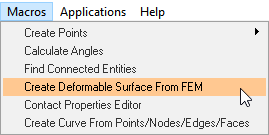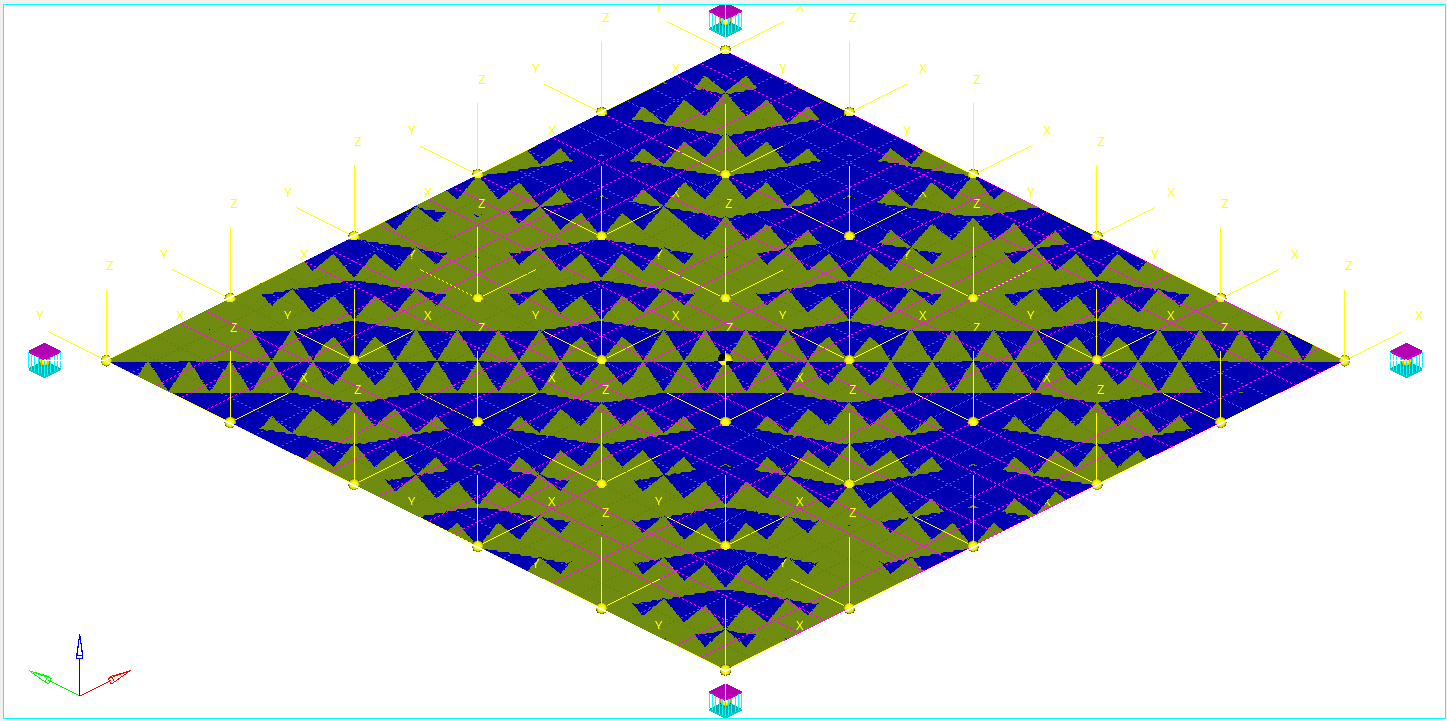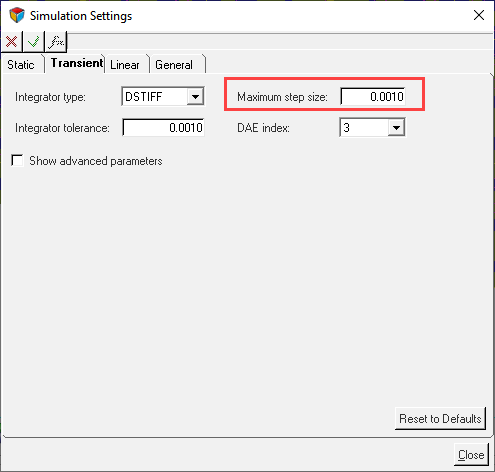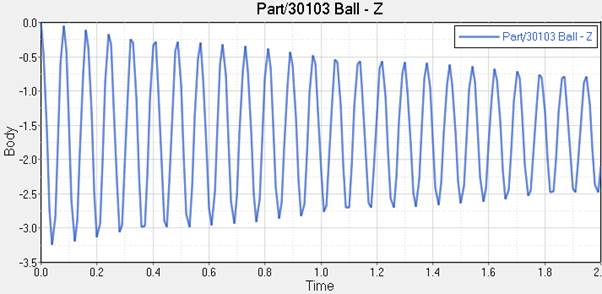MV-1028: Model a Point-to-Deformable-Surface Higher-Pair Constraint
In this tutorial, you will learn how to model a PTdSF (point-to-deformable-surface) joint.
Create Points
In this step, you will create points for the PTdSF model.
Create Bodies
In this step you will create the membrane and ball bodies for the PTdSF model.
Create Markers and a Deformable Surface
In this step you will define markers for the membrane.
Create Joints
In this step you will define four fixed joints between the membrane and the ground.
Create the PTdSF Joint
In this step, you will define the PTdSF (point-to-deformable-surface) joint as an advanced joint.
-
Open the Add AdvJoint dialog by doing one of the
following:
- From the Project Browser, right-click on Model and select .
- On the Model-Constraint toolbar, click the
 (Advanced Joint)
icon.
(Advanced Joint)
icon.
- In the dialog, for Label enter AdvancedJoint 0. Accept the default variable name.
- In the Type drop-down menu, click PointToDeformableSurface Joint.
- Click OK.
-
In the panel, configure the Connectivity tab.
-
Double-click
 and select
Ball.
and select
Ball.
- Click OK.
-
For
 , choose BallCM and
click OK.
, choose BallCM and
click OK.
-
For
 , choose DeformableSurface
1 and click OK.
, choose DeformableSurface
1 and click OK.
-
Double-click
Create Graphics
In this step, you will create a graphic for the ball.
-
Open the Add Graphics or GraphicPair dialog in one of the
following ways:
- From the Project Browser, right-click on Model and select .
- On the Model-Reference toolbar, click the
 (Graphics) icon.
(Graphics) icon.
- In the dialog, for Label enter Ball.
- In the Type drop-down menu, choose Sphere. Then click OK.
-
In the Connectivity tab, double-click
 .
.
- In the dialog, select Ball and click OK.
-
Double-click on
 .
.
- In the dialog, select BallCM and click OK.
- In the Properties tab, under Radius enter 1.0.
- In the Visualization tab, choose a color for the graphic.
Find Nodes
In this step, you will return to the Bodies Panel and find the Nodes on the membrane.
Run the Model
In this step, you will run the model with a PTdSF constraint.
View the Results
In this step, you will view the animation and plot the Z position of the center of mass of the ball.






